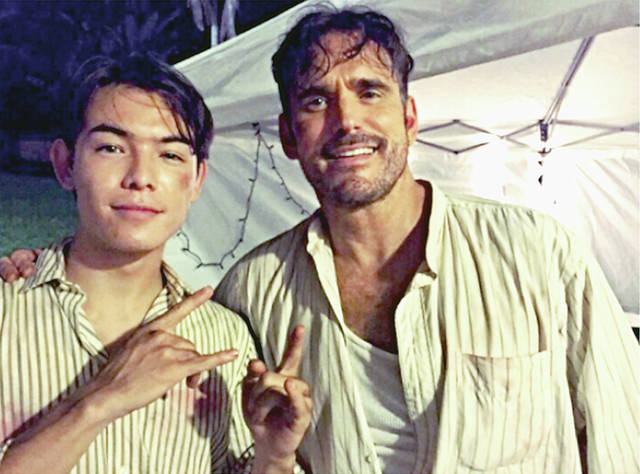Feature film producers want the Big Island to ramp up its filmmaking gravitas with a state-of-the-art studio for indoor production. ADVERTISING Feature film producers want the Big Island to ramp up its filmmaking gravitas with a state-of-the-art studio for indoor
Feature film producers want the Big Island to ramp up its filmmaking gravitas with a state-of-the-art studio for indoor production.
Derek Hall, managing director of public-private partnership Honua Studio in Kailua-Kona, which already boasts fiber optics connecting 450 editing and post-production studios worldwide, said major motion pictures are hungry for a Big Island studio capable of expanded service.
That can mean construction of
large, indoor sets; post-production animation, sound editing and film editing; and the ability for actors to work indoors during weather that doesn’t match film needs.
Currently, Honua can handle indoor filming for projects up to the $5 million to $10 million range. But Honua wants to expand so it can handle big-budget films of $50 million, $60 million or $100 million.
“We’re not announcing anything yet. Yet we are having some meetings about expanding in the future … ,” Hall said Thursday.
No decisions have been made, but Hall dreams of expansion happening within the next couple of years.
Hawaii County Film Commissioner Justin Finestone said feature film producers need a major stage “to shoot interiors.”
That’s something the Hawaii Island Film Office is pursuing, he said.
“I’ve even had requests from productions, ‘Do you have an airplane hanger we could use?’” Finestone said.
A new studio, he said, will need to be a public-private partnership, with studio space used for non-film activities in between movie shoots. During downtime between movies, such a grandiose facility will need income to stay viable.
“That’s kind of something we’re actively pursuing,” Finestone said.
Hall said it could help to build the studio to accommodate major concerts — the kind performers won’t currently book on the Big Island because there’s no music venue large enough.
He said such a studio will need to have a large space (Honua Studio’s tentative idea would be 30,000 to 40,000 square feet), sound proofing, a roof of about 40 feet, if height restrictions allow, availability of building materials and availability of experienced movie crews.
Honua is following the “Field of Dreams” concept for a studio, Hall said.
When it comes to big-budget feature movies, “if we build it, they will come,” he said.
Finestone said West Hawaii is being looked at for such a facility.
But, he said, “if someone comes forward and says, ‘Hey, we’ll give you 20 acres in East Hawaii,’ certainly we’ll do it.”
A new, state-of-the-art studio used as a community center, skateboard facility, music venue and/or community “destination” will work.
“We can create a venue for that,” Finestone said. “We think there’s some way to make that work.”
Hall said he expects Honua to expand in Kailua-Kona.
But, he said, “we should look at having some sort of hub or office on the east side.”
That’s because filmmakers need diverse outdoor film locations, and East Hawaii has many of the most sought-after spots.
The movie “Jo, the Medicine Runner,” handled by Honua Studio, shot 40 percent of its scenes in East Hawaii, Hall said.
Oahu, which has previously been the primary movie location in the state, is just about maxed out, Hall said.
Finestone said filmmakers of “Kong: Skull Island” spent $8 million in Oahu on rentals, $2 million on transportation, $2 million on food catering, $2 million on carpentry and $5 million on lodging.
It employed 400 people hired locally.
He’s hoping the overflow from Oahu, plus projects the county attracts on its own, will help film making continue to grow on the Big Island.
“A lot of the resorts and hotels on the island are very film-friendly,” Finestone said.
Email Jeff Hansel at jhansel@hawaiitribune-herald.com.



